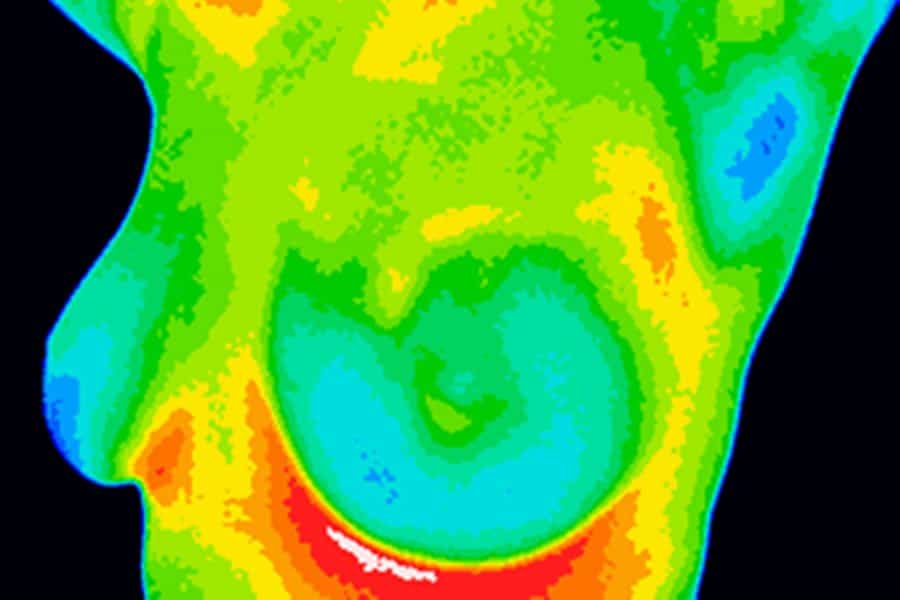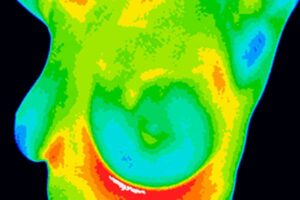According to the National Institutes of Health, one woman in 8, will be a victim of breast cancer in her lifetime. We know that our environment, with chemicals and pesticides and hormone-laden meat, are all contributors to this. But also, mammography using ionizing radiation is problematic.
No doubt you have heard of MRIs and mammograms for detecting breast cancer, but let us introduce you to thermography which also gives women an assessment of any abnormalities that may be present and which may require further testing.
We know that breast cancer survival depends upon its earliest possible detection. Research has shown that if breast cancer is discovered in its earliest stages, the cure rates are excellent.
Who is at greatest risk for breast cancer?
Your chances of getting breast cancer increase if you have a family history of the disease although 75 percent of women who get breast cancer have no such history
Excess estrogen is the greatest single risk factor for breast cancer.
Thermography can warn women if they have excess estrogen within their breasts and the risk factors can be decreased with proper diet and lifestyle change.
What is Thermography?
Thermography is:
- Non-invasive
- No radiation
- Painless
- No contact with the body
- F.D.A. approved
This quick and easy test starts with your medical history being taken before you partially disrobe for the scanning to be performed. You do not have any contact with the equipment and your first 15-minute session provides the baseline of your ‘thermal signature’. A subsequent session assures that the patterns remain unchanged.
Thermography detects the subtle physiologic changes that accompany breast pathology, and we can then plan accordingly and lay out a careful program to further diagnose and/or monitor you during and after treatment.
All of your thermograms (breast images) are kept on record so any changes can be detected during your routine annual studies.
When should women be screened?
All women should be screened starting at age 20. Approximately one-third of all breast cancers occur in women under the age of 45.
At LifeWorks, we refer our female patients to another clinic which offers thermography. If you are referred to them by one of our practitioners, then you have the option of having your thermography report sent to your LifeWorks practitioner for review at your next appointment.
All of your thermograms (breast images) are kept on record and once your stable thermal pattern has been established, any changes can be detected during your routine annual studies.
Thermography can also be applied to other specific areas to check for blockages in blood flow, such as the carotid arteries going up the neck to the brain. Blockages in these arteries can lead to premature strokes.
Related Conditions and Therapies
Breast Health Issues
Thermography
Helpful Resources for Women
- Women's Health Care - a page dedicated to treating issues for women.





